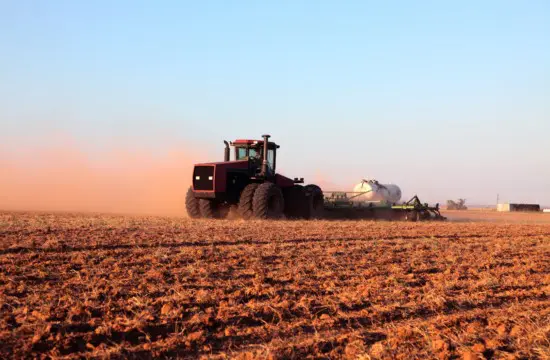Applying phosphorus (P) and potassium (K) in the fall may seem like a no brainer, but the practice is pivotal for the following year’s growing season and attaining top corn and soybean yields.
It’s not a practice to take lightly, and there are steps you can take to ensure your fall fertilizer is applied in a timely and effective manner. Mike Wilson, specialty products coordinator for Wabash Valley Service Company in Allendale, Illinois, offers these tips:
- The earlier you get your P and K applied to fields, the better. Once applied, the P and K won’t go anywhere, as long as they are managed properly. The sooner these nutrients mineralize, the more available they will be to the subsequent crop.
- The fall application window may look long and leisurely, but fall weather can turn quickly from optimum to unsatisfactory.
- When mechanical incorporation of applied fertilizer is required, get it done with chisel plows, disks or vertical tillage implements as quickly after application as possible – preferably in a few days but no more than two weeks later.
- Fertilizer spreaders should be correctly calibrated. With spinner units, conduct a pan test. Proper maintenance of equipment is essential, and nutrients are too expensive for misapplications.
- Consider planting a cover crop following fall fertilizer applications to help hold soil and nutrients in place.
- Don’t let applied P and K sit for long on highly erodible land. These fields are most susceptible to off-site movement of nutrients.
- Fall-applied fertilizer offers agronomic advantages over spring-applied fertilizer. It takes time for nutrients to break down in the soil and become available for crop uptake. Let tillage and winter moisture do that job for you.
- Agronomists and custom applicators: Have your farmer-customers book custom application services early. Waiting to the last moment to book fall fertilizer applications is fraught with risk.
- The cost of P and K is sometimes a bit cheaper in the fall than in the spring. Spring prices are more susceptible to supply and demand issues.
- Never apply fertilizer to frozen or snow-covered ground.
There are many factors to consider when applying fertilizer in the fall, but it is essential to ensuring the success of next season’s crop. And according to Wilson, paying attention to detail will increase the effectiveness of fall fertilizer application.
“Get the fertilizer out and get the job done,” says Wilson.

